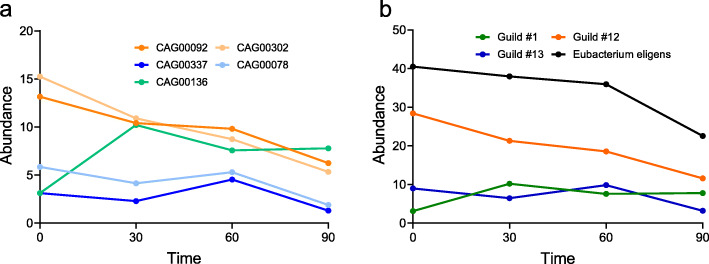Fig. 3.
Guild-based aggregation overcomes the pitfall of taxon-based analysis to reflect the variations in strain-specific responses. a and b together illustrate why guild-based aggregation method produces a more accurate representation of strain-level microbiome response to dietary intervention in a PWS study compared with taxon-based aggregation. a shows the abundance change of the 5 Eubacterium eligens strains over time. If taxon-based aggregation is used, all 5 Eubacterium eligens strains could be collapsed into one species-level unit and represented by the black line in b. In contrast, using the guild-based aggregation method, the same 5 Eubacterium eligens strains are grouped into 3 different guilds (#1, #12, and #13). Each of the colored lines in b represents the abundance change over time of one guild. Abundance change pattern of the three guilds in b accurately captures the three types of abundance change patterns among the 5 Eubacterium eligens illustrated in a. The dots on each line in a and b represent the mean abundance (see S.E.M in Supplementary Table 1)

